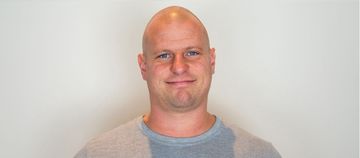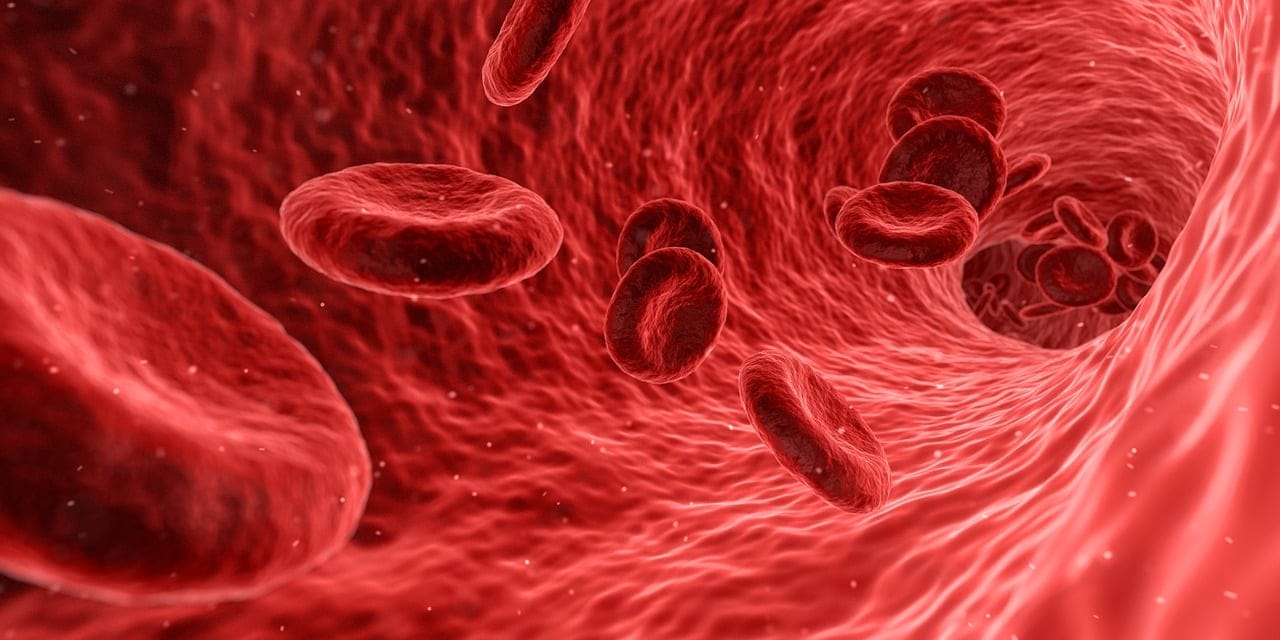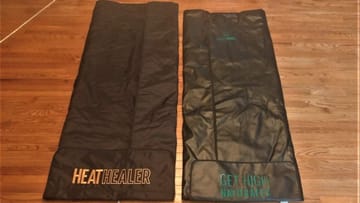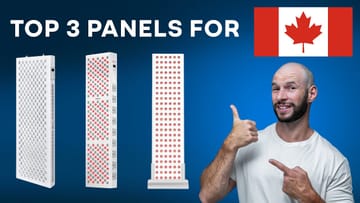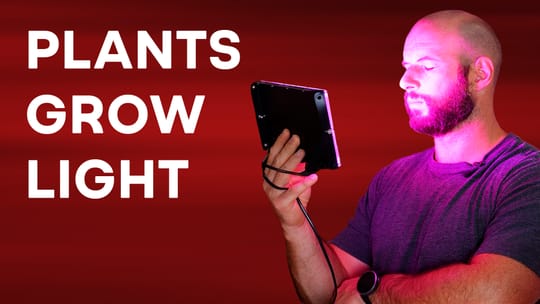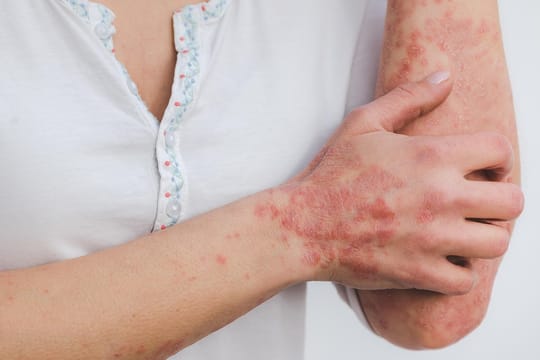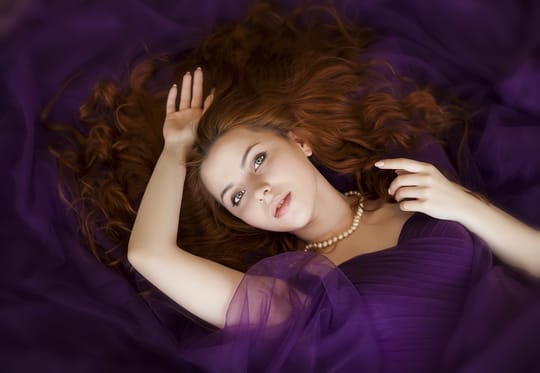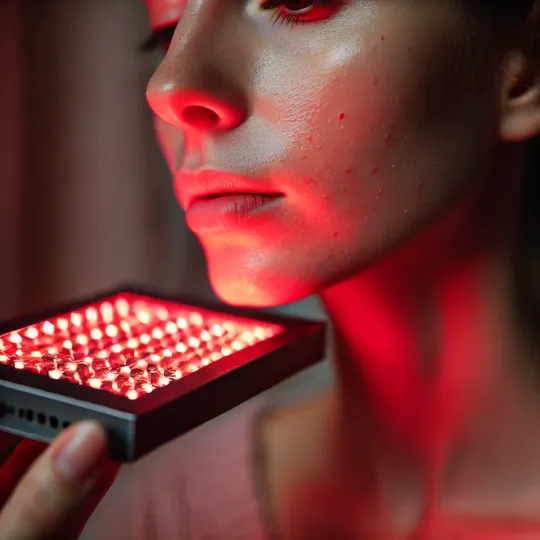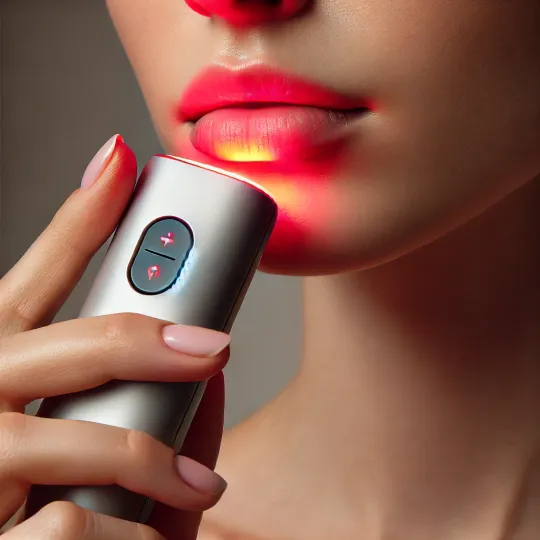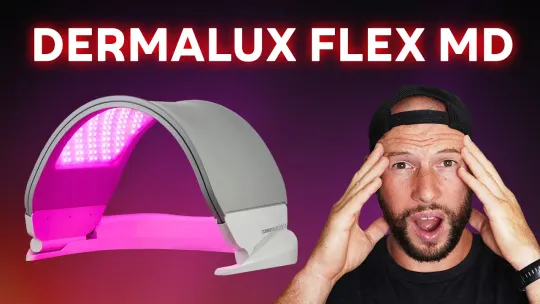So today I'll talk about red light therapy for varicose veins. Varicose veins are not just a aesthetic nuisance but often a sign of real underlying health problems - at least risk factors that increases your chances of many other health conditions as well.
In this blog post, I'll consider different topics, such as what light therapy specifically targets spider veins and whether there's good evidence for it, blue light therapy for spider veins, does red light therapy help varicose veins, and so forth.
Let's begin with the basics though:
The Cause Of Varicose And Spider Veins
Varicose veins, or spider veins, are a sign that you may be closer to major health problems (1). Having varicose veins increases your overall mortality risk (the risk of dying, independent of cause) by 37% over people who don't have these veins (1). And the problem is a little bit worse in men and those over 65 years old.
Also, varicose veins double your risk of a cardiovascular event (1). Examples here are a stroke or a heart attack. So if you've got these veins, they're not just an aesthetic problem but a sign that you've got underlying circulatory issues.
Varicose veins are bulging veins that are typically located on the lower body (2). Risk factors include a family history of circulatory problems, female sex, obesity, obesity complications, standing too much regularly, gut problems, and more. So some of the underlying risk factors of varicose veins are fully preventable through lifestyle interventions, such as obesity, standing for long periods of time, and gut problems (2).
And, there are more complications of varicose veins. Researchers write:
"Symptoms of varicose veins include a heavy, achy feeling and an itching or burning sensation; these symptoms worsen with prolonged standing. Potential complications include infection, leg ulcers, stasis changes, and thrombosis. " (2).
Fortunately, the treatment options for varicose veins are somewhat similar to those for people with heart and blood vessel disease in general. Advice includes normalizing the body fat percentage, exercising, following a healthy diet, preventing yourself from standing too long, and not wearing any restrictive clothes.
Other studies also recommend specific lifestyle interventions, such as:
"varicose vein disease can be prevented by doing regular yoga/exercise and consumption of several fruits and vegetables such as Grapes, blackberries, avocados, ginger, and rosemary." (3)
So that's easy!
Surgery and laser treatments are also available for when the problem has become very big (2). Also, being obese or prolonged standing are the main risk factors - two factors that are almost 100% preventable by your choices (3). Reversing the conditions is much more difficult than preventing it, however, just as is the case with many health problems such as heart disease, diabetes, Alzheimer's, Parkinson's, and so forth.
So generally, if you follow this advice, you'll do great:
- Exercise a few times per week, combining aerobic training at some days and interval or strength training at others.
- Eat a whole food diet, with single ingredients that humans used to eat 200 years ago.
- Don't eat 24/7 - ideally eat your calories in an eight-hour window each day, and quit eating early evening.
- Move throughout the day, don't sit or stand for long periods of time. Your body is not meant to stand or sit straight for eight hours a day and doing so does tremendous damage.
- Use saunas and sunlight for blood flow promotion.
- Don't smoke and limit drinking to one glass per day as a woman and two glasses as a man.
That should prevent 95% of cases if consistently applied, and doesn't even include all tips I could give.
The Common Symptoms Of Varicose Veins
So you can't always see varicose veins. Researchers write:
"It is now a general term used to describe these bulging veins, and also underlying incompetent veins that reflux and cause the surface varicose veins. Importantly, "varicose veins" is often used for superficial venous reflux even in the absence of visible bulging veins. These can be simply called "hidden varicose veins". Varicose veins usually deteriorate, progressing to discomfort, swollen ankles, skin damage, leg ulcers, superficial venous thrombosis and venous bleeds" (4).
Pain is also an almost universal symptom of varicose veins. Swelling and a heavy feeling in the legs are other symptoms (6). Also, there's often discoloration around the veins, itching, and you may have cramps at night as well.
So what causes these symptoms fundamentally? Well, at some point, the valves of the blood vessels start dysfunctioning. The blood will then reflux and not circulate properly anymore, leading to a buildup of blood in the veins. At that point, there are often already blood pressure problems and problems with the veins (7).
Tingling of the lower legs is another symptom that may be present, even if the spider veins aren't visible yet. But even if you don't have other symptoms, it might be smart to get tested, though, if you've got many of the risk factors. Ultrasound by a trained medical professional can spot these varicose veins, especially early on when the veins are not bulging yet.
Lower estimates assume that just 2% of people are affected by varicose veins, while higher estimates (with not fully developed veins) go up to 70% (6). Other studies have upper limits of 15% for men and 30% for women (11).
Over time, the problem can also become worse and worse when left untreated. At first, there may not be a visible problem at all. Later on, visible spider veins can appear. Then, the skin is affected and edema is present. And finally, skin problems can exacerbate, and ulcers can develop.
Can Light Therapy Treat Spider And Varicose Veins?
Yes, light therapy can treat spider and varicose veins - but not in the way you'd suspect (8). Lasers can be used, for instance, inside the veins as a treatment strategy. Researchers write the following about this procedure:
"For endovenous laser ablation, a fiber optic laser is inserted into the vein and, when activated, will transmit light energy to the laser tip that is distributed radially by a prism and will heat the surrounding tissue. Heat injury to the vein wall will cause disruption to collagen, leading to fibrosis and collapse of the vessel. Tumescent anesthesia, which plays a critical role in this procedure, is given prior to ablation to decrease intravenous blood volume through venous compression, create a barrier between laser and surrounding tissue, and provide local anesthesia. The procedure can be performed in an outpatient setting and does not require general anesthesia. Advantages of endo-ablation include rapid recovery with return to work on average in 1 day and 96.7% of vein obliteration maintained at 3 and 5 years after the procedure." (8)
So, that's an extremely good result. Nevertheless, this laser treatment can only be applied by a medical professional that has experience with applying lasers. And, the treatment is invasive because they'll have to enter your vein to apply the light therapy there.
Many studies have investigated this invasive laser treatment. The procedure described above can even be used during pregnancy, in a safe way (9). The therapy isn't easy to apply though, due to differences in vein structures and varying underlying causes (10). Nevertheless, there's no need for an operating room for this treatment, and no need for general anesthesia either (11).
For ulcers, moreover, if these develop in the late stage of spider veins, light therapy may also help (12). The pain and healing of these ulcers may improve. Next up, let's consider other types of light therapy:
Can Red Light Therapy Help With Varicose Veins, Too?
Currently, there are no studies on red light therapy for varicose veins. Only laser treatments that I talked about above have been proven to have a very strong effect.
So if you see a blog state that red light therapy or blue light therapy for varicose veins works, but there's no scientific reference, the blog is at the very least misleading!
Nevertheless, red light therapy can help you deal tremendously with varicose veins, in my opinion, because it can help you deal with the underlying risk factors. Let's consider a few of these risk factors one by one:
- Blood pressure: red light therapy can reduce blood pressure, especially in the short run (13; 14; 15). Red light therapy helps release so-called Nitric Oxide (NO), which enhances blood flow and helps reduce your blood pressure. We've seen pretty dramatic reductions in blood pressure in some hypertensive people personally, although that's only anecdotal evidence and you'd have to repeat the experiment frequently
- Lower inflammation. Inflammation also underlies varicose veins, and red light therapy can help you deal with both local and systemic (chronic) inflammation (16; 17; 18; 19). Excess inflammation signifies a continually active immune system, in the presence of damage. Preventing that systemic chronic inflammation is one of the great benefits of red light therapy, that almost always results in higher energy production. The higher energy production, in turn, assures that cell function goes up.
- Endothelial function (which determines the suppleness of your blood vessels): here too, red light therapy can have an immediate effect, although the effect may not be super strong after just one session (20). Over time though, red light therapy can aid endothelial function, help create new blood vessels, and expand blood vessels so that blood more easily moves through it (21). So many of the risk factors of heart and blood vessel disease, such as atherosclerosis, that are intertwined with spider veins, are affected by red light therapy (22; 23).
- Helps you lose fat, one of the biggest risk factors for developing varicose veins (24; 25; 26; 27). You can lose up to a quarter inch of waist size per red light therapy treatment, for instance, and up to 3 pounds over a four week period (24). That's without changing any of your other lifestyle factors, and, with very suboptimal treatment parameters even because only the waistline was treated in these studies, not the full body.
- For the reasons described above, such as fat loss and helping endothelial function, red light therapy also improves circulation. Beter circulation, you guessed it, will help counter spider veins as well.
- Red light therapy can massively improve workout recovery, which in turn allows you to exercise more frequently and, therefore, lose more fat and build more muscle. I've talked about this topic in some other blogs and Alex has considered the topic in a video on red light therapy for athletic performance.
So even though there are no direct studies of red light therapy on varicose veins, there's tons of circumstantial evidence allowing you to assume that red light therapy is very beneficial.
How Red Light Therapy Promotes Cellular Healing?
Yes, as I've stated before, red light therapy has tremendous potential for overall cellular healing. I've mentioned a few of these mechanisms before. Many mechanisms can be described, such as oxidative stress, gene expression, deeper sleep quality that helps you recover quicker, and more.
Nevertheless, I still need to see direct studies on red light therapy and spider veins before I can make any good conclusion on this topic. Thus far, all these biological mechanisms are just speculation.
Nevertheless, I can find evidence (although I didn't search for extremely long) that exercise improves the condition of people with varicose veins (28; 29; 30; 31). Sometimes that exercise needs to be combined with surgery though.
The weird thing is also that I cannot find any easy high-quality studies on fat loss and varicose veins. Nevertheless, in the most obese people, weight loss is recommended before any other cardiovascular or other treatment is applied (32).
So the overall picture is clear. We need more studies, not just on red light therapy for varicose veins but also good exercise and diet intervention studies.
How Much Time Do Varicose Veins Need To Heal With Red Light Therapy?
Here's there's no easy answer possible because the research simply isn't there. So even though you can say that red light therapy helps you with many underlying risk factors, I can't say how long healing would take or even if healing is possible.
Treatment methods for varicose veins are improving big time, but often this involves surgery or medical procedures, so I can't make simple promises here (33; 34; 35; 36). The best you can probably do is use red light therapy normally. Check out the video Alex Fergus created on that topic:
This video explains how to use red light therapy for beginners. Also, in terms of red light therapy dosing, it's probably smart to start slow and check out the following video on that topic:
And just following simple health advice to avoid developing varicose veins in the first place is also in order. Ovoid being overweight or obese for long periods of time and ensure you're moving a lot throughout the day.
Conclusion: Use Red Light Therapy For Spider Veins Mainly As An Aid!
Unfortunately, there's no easy answer here. I would have loved to tell you that red light therapy for spider veins solves the problem completely. But that's not the case. Red light therapy can probably support
For at-home light therapy for spider veins, consider the following blogs:
- How To Use Red Light Therapy 101: The Best Guide For Starters - this blog post explains how you can start with your red light therapy journey!
- The Best Budget-Friendly Red Light Therapy Panel Review - these panels are great for local treatment such as your legs.
- Best Red Light Therapy Panel 2024: Epic Comparison - these panels are great for treating your entire legs and can be combined to treat your entire body.
You'll like the effects red light therapy has for countering the symptoms and underlying causes of spider veins!
This is a post by Bart Wolbers. Bart finished degrees in Physical Therapy (B), Philosophy (BA and MA), Philosophy of Science and Technology (MS - with distinction), and Clinical Health Science (MS), has had training in functional medicine, and is currently chief science writer at Lighttherapyinsiders.com
